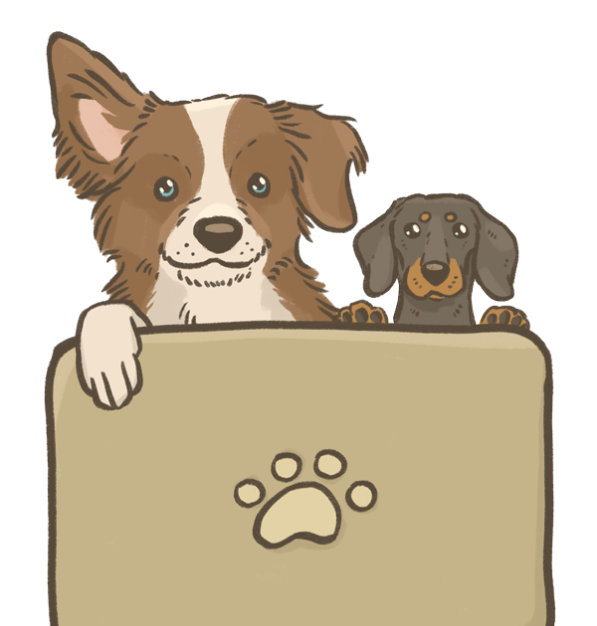Keep your pets safe during storm season

We are no strangers to a stormy summer here in Australia, but did you know that our pets may suffer with stress and anxiety during this season? Our pets can sense storms coming long before they arrive, many becoming quickly agitated. According to the Animal Welfare League Queensland (AWLQ), the number of runaway pets spike dramatically in storm season.
Don’t worry, this can be avoided, we have a few tips to help prepare your pet for a safe and calm storm season.
Create a safe space
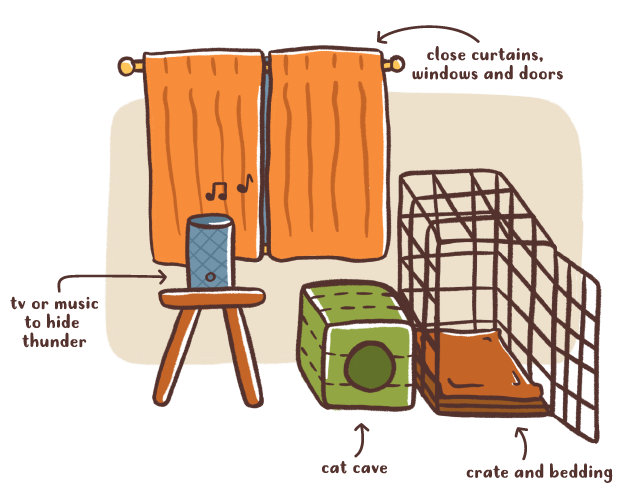
If your pet becomes overly stressed, find them a safe and enclosed space to wait out the storm. For dogs, a crate or quiet room is ideal, make sure they have their bed some of your clothing that smells like you to provide comfort. A cat cave or cardboard box is a great way for a cat to feel secure and hidden from the storm. For extra anxious pets, limit light by closing all curtains, windows and doors and turn on the TV or some music to hide the sound of thunder.
During peak storm season, RSPCA Chief Veterinary Officer Dr Anne Chester advises, “Animals are more likely to cope with a storm if they are in an environment where they feel comfortable”.
Bring your pets indoors
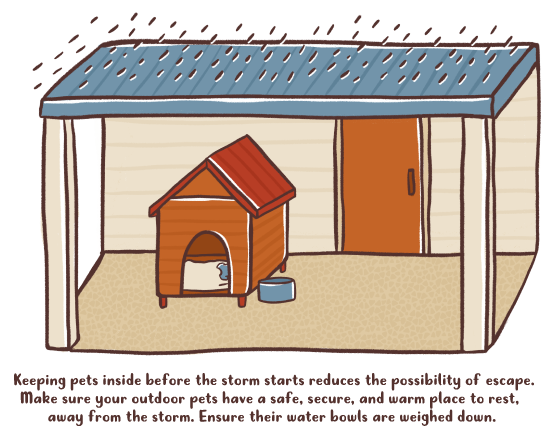
Whether you have an indoor or outdoor pet, try to make sure they’re indoors before the storm starts. If your pet escapes during a storm, the risk of injury is much higher as a frightened pet may not have the street smarts they typically would. Keeping them inside reduces the possibility of escape and keeps them safe.
If you are unable to bring your pet inside, tethering may seem ideal to keep them secure but if your pet is susceptible to anxiety, they could hurt themselves in their panic. Make sure your outdoor pets have a safe, secure, and warm place to rest, away from the storm. Ensuring water bowls are weighed down so your pets have access to fresh water without them being tipped over is a necessity.
Identification
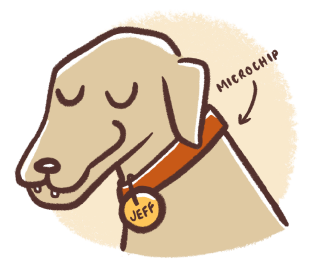
It is very important that your pet has a form of identification on them in case they do happen to escape. An ID tag with your pet’s name and your phone number, and an updated microchip are ideal. According to the RSPCA, at least 30 percent of pets that enter the RSPCA have microchips, but the chip is not registered to the owner; it’s important to make sure your details are kept up to date for a quick reunion. ID tags can be purchased and engraved on the spot from your local Petstock store.
Stay with your pet
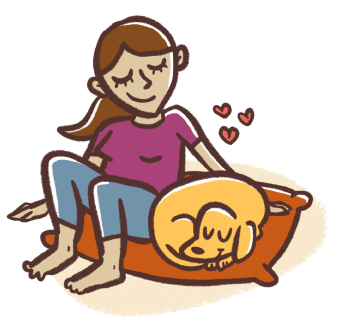
Your pet loves being with you and making sure your pet can see and hear you during thunderstorms may help to reduce their stress levels. If you can’t be home with your pet, see if your friends, family or trusted neighbours are able to take care of them during the storm. Dog Trainer and Behaviorist, Lara Shannon, advises not to coddle your pet as this may encourage their anxious behaviour. Alternatively, do not punish your pet for their anxious behaviour either, this will only create more fear and make the behaviours worse. Lara suggests taking the attention away from the storm before the anxious behaviour begins, by creating a positive situation with the environment and noise. You can view Lara’s full article on reinforcing anxiety here.
Distractions

Completing normal, everyday activities will show your pet that there is no reason to be fearful. This is also a great time for some extra bonding activities like learning a new trick. You can even distract them with their favourite toys or treats so they relate storms with play time and yummy snacks. Enrichment toys stuffed with your pet's favourite Big Dog raw flavour is a great way to keep your pet distracted and associate storms with positivity.
Tools to help reduce stress
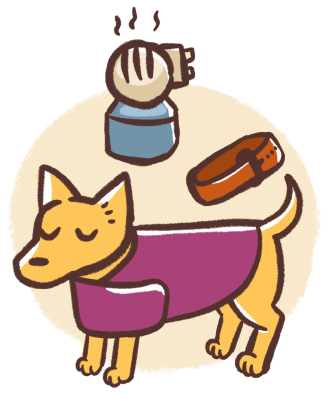
- FELIWAY diffuser - FELIWAY comforts and reassures cats and kittens, reducing signs of stress such as urine spraying, scratching, fighting or hiding. FELIWAY works by releasing pheromones to create a safe and secure environment at home.
- ADAPTIL collars or diffusers - ADAPTIL comforts and reassures dogs and puppies, helping them to feel calm and relaxed. ADAPTIL is an excellent solution to help your dog feel comforted and secure at home by releasing pheromones to create a safe and secure environment.
- ThunderShirt – The ThunderShirt helps to calm in over 80% of cases and is recommended for thunder anxiety for dogs and cats. The ThunderShirt applies a gentle, constant pressure to your dog or cat’s torso. Research on both humans and animals suggests that this type of pressure can release a calming hormone like oxytocin or endorphins.
If you’d like information on crate training, we recommend this article by certified trainer, Lara Shannon, as a great starting point.
What to do if your dog escapes or flees during a storm
If your dog happens to escape or flee during a storm, triggering fear and anxiety and putting them in what’s known as survival mode or flight mode. In this state, the dog’s instincts take over, focussing entirely on self-preservation, looking for safety, food, and water. Even familiar voices or scents may not be comforting and can even feel threatening, so a lost dog may run from its own owner or avoid all human contact.
This is why chasing or calling a lost dog, even your own, can make things worse and reinforces their instinct to flee.
How “Flight Mode” Affects a Lost Dog’s Behaviour
- Avoids humans: Even friendly, well-trained dogs may ignore calls or run away from people they know.
- Perceives threats: Familiar sights, sounds, or smells (like an owner’s voice, a car, or a favourite toy) can trigger panic if the dog doesn’t feel safe yet.
- Focusses on survival: The dog’s priorities shift entirely to finding shelter, food, and water while the bond with humans takes a back seat until they feel secure.
- Reacts to loud noises: Yelling, engines, or sudden sounds can frighten the dog into bolting again or running into danger.
What to Do If Your Dog is Lost or You See a Lost Dog
- Do not chase or call: This usually causes the dog to run away from you when they are in ‘flight mode’. In this state they may run into traffic or unsafe areas.
- Avoid direct eye contact: Dogs may interpret this as a threat.
- Stay calm and still: Avoid sudden movements; sitting down can make you appear less intimidating.
- Keep your distance: Allow the dog to approach on their own terms.
- Use scent and food: If the dog seems curious, try gently luring it with strong-smelling food.
- Try passive tactics: Leave out familiar-smelling items, food, and water near your home to help guide the dog back safely.
- If near a road: Pull over safely ahead of the dog, open your back car door, and step away. Sometimes this gives them a safe option to jump in.
- Give them space: A panicked or anxious dog might react aggressively, even toward their owner, so patience and distance are key.
When to Use Your Voice
Once the dog has calmed down and is no longer in full flight mode, a familiar, gentle voice can become comforting again and help draw them back to safety.
